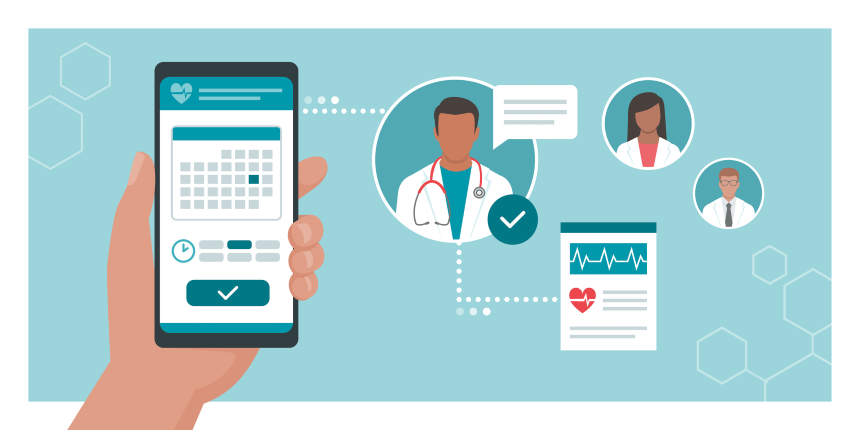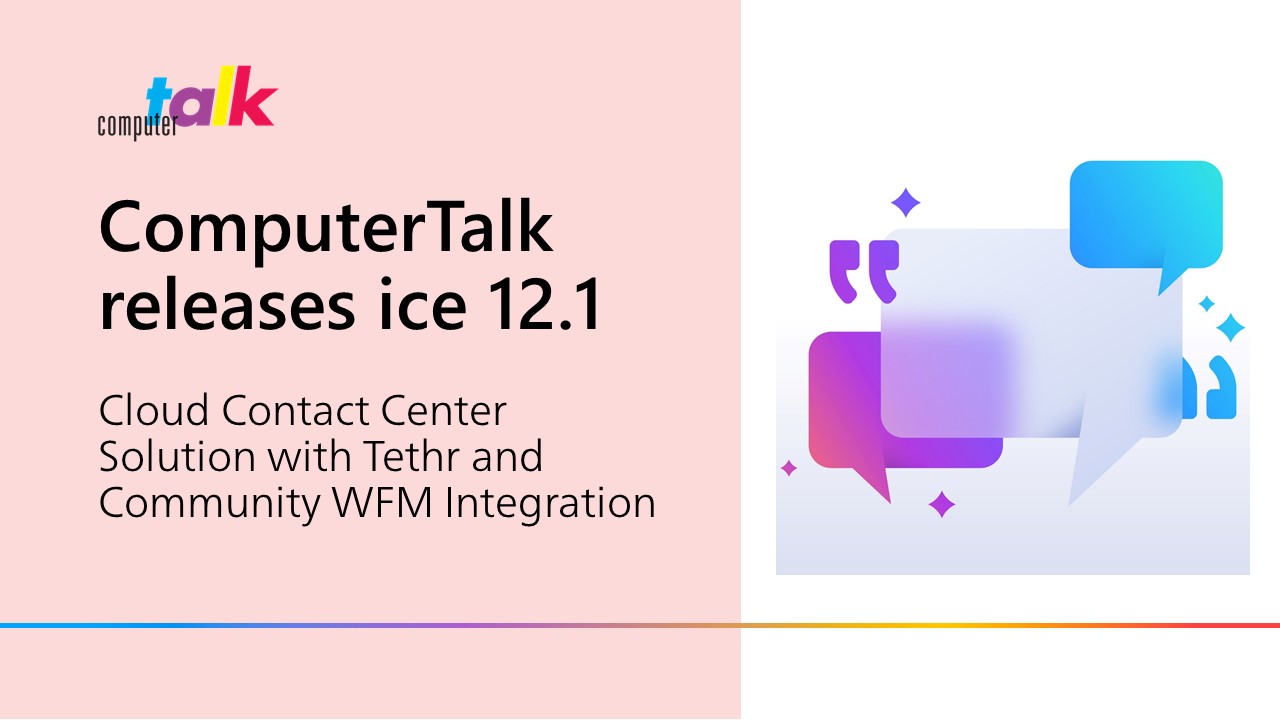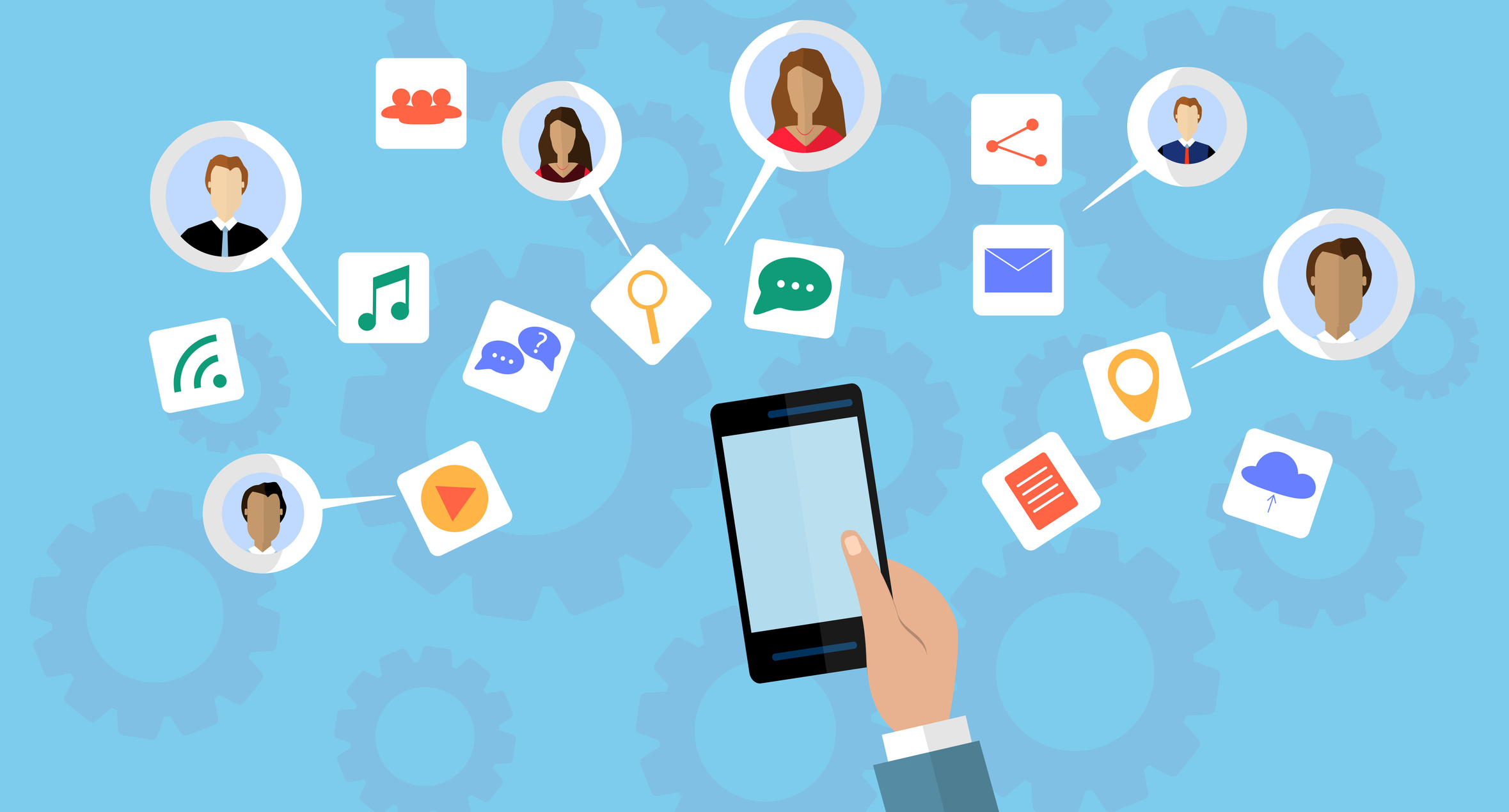Featured
Healthcare Contact Center Best Practices for Improved Patient Experience in 2025
by Anastasia Micic | Published On September 18, 2024 | Last Updated April 22, 2025

In the healthcare space, contact centers are crucial to bridging the gap between service providers and patients seeking support, information, or guidance.
Just as organizations in every industry need to invest in delivering excellent customer experiences to facilitate growth and profitability, healthcare groups rely on their contact center solutions to enhance patient experiences.
Combining the right technology, healthcare contact center best practices, and processes is how health service providers, clinics, hospitals, and other organizations improve care quality, and maintain strong patient-provider relationships.
Unfortunately, for years now, many healthcare organizations have struggled to optimize their patient service strategy with disjointed, clunky, and outdated systems. In this guide, we’ll share the best practices you can use to enhance patient experiences, empower employees, and differentiate your organization in the medical landscape.
Understanding Healthcare Contact Centers
While healthcare organizations might not serve customers in the same way as other companies, they still rely heavily on contact center solutions.
Hospitals, doctors’ clinics, health insurance companies, and more leverage contact center software and technology to manage various outbound and inbound conversations. Contact centers serve as a point of contact for patients in search of guidance and support. However, they’re also crucial for tasks like:
Fundraising: Nonprofit healthcare organizations, hospitals, and companies that rely heavily on donations to fund essential programs, research, and patient care need effective contact center solutions. The right technology allows teams to manage outreach campaigns, engage donors, and nurture strong relationships with contributors.
Finance management: Contact centers in healthcare streamline the billing process, allowing companies to send timely payment reminders and invoices to patients. This helps to maintain the financial health of the organization but also alleviates the stress on patients by offering clear and prompt financial guidance.
Appointment booking: Contact centers enable healthcare organizations to simplify the scheduling process and offer patients a simple way to book, reschedule, and cancel appointments. The right appointment booking system can help to improve patient flow, reduce no-shows, and enhance resource allocation.
On a broad scale, implementing healthcare contact center best practices is how organizations ensure they can streamline and optimize patient communication, enhance operational efficiency, and deliver a consistent experience for all patients and stakeholders.
The Main Challenges in Healthcare
Running an effective healthcare contact center can be complex. Healthcare organizations face a range of unique challenges, from issues managing compliance to restricted resources. However, the right contact center and communications tools can address multiple roadblocks, such as:
Resource constraints:
A lot of hospitals and various other healthcare groups can struggle with limited resources. They need to find ways to perform more efficiently and make the most of their full-time equivalents (FTEs). Intuitive communication tools and advanced contact center software can help organizations to empower every healthcare call center representative and team member.
With the right technologies, businesses can streamline workflows, automate routine tasks, and enable staff to focus on high-priority patient care activities. For example, automated appointment reminders or billing notifications reduce the administrative burden on healthcare staff, allowing them to concentrate on more critical tasks without compromising service quality.
Unpredictable Call Volumes
Call volumes and inquiries can change drastically from day to day in any industry. In healthcare, however, there are various situations that can lead to much higher call volumes. Emergency situations and unexpected events, such as a pandemic outbreak or natural disaster have an instant impact on the number of calls contact centers receive.
If a healthcare organization doesn’t have the right resources in place to handle these spikes, the result can often be long waiting times and frustrated patients. Advanced contact center solutions, with self-service solutions like intelligent IVR systems and intelligent call routing can help manage these surges. They can assist in directing calls to the appropriate department, offering self-service options, and providing real-time updates to patients.
Complex Patient Inquiries
Patients contacting a healthcare organization don’t just want to book appointments. They want rapid access to in-depth information about billing procedures, insurance policies, medical treatments, and more. Delivering consistent, knowledgeable support can be complex for a healthcare organization. That’s particularly true for companies struggling with limited representatives and resources.
Advanced communication tools, such as AI assistants that can surface information instantly from knowledge bases and Customer Relationship Management (CRM) tools can help. They ensure each healthcare call center representative has direct access to everything from patient records and treatment histories to official service documentation.
Regulatory Compliance Requirements
One of the most significant challenges for healthcare organizations involves figuring out how to deliver personalized, convenient, and consistent service, while remaining compliant with strict industry regulations. Businesses need to ensure they’re adhering to mandates like HIPAA, protecting patient data and monitoring its transmission constantly.
Contact center solutions that enable businesses to maintain comprehensive audit trails, record data when necessary, and even redact sensitive information from reports are often crucial.
Healthcare Contact Center Best Practices
Implementing healthcare contact center best practices isn’t just crucial to enhancing patient care and protecting your organization’s reputation. It’s how you ensure you’re using resources effectively, reducing costs, improving employee performance, and avoiding regulatory issues.
Here are the top healthcare contact center best practices to follow this year.
Implement an Omnichannel Strategy
Patients in today’s world want to be able to communicate with care providers and healthcare organizations through various channels. Alongside being able to reach you on the phone, your patients will also want to connect through SMS, conversational messaging apps, emails, and even social media. This means you need a contact center system that bridges the gaps between all channels.
An omnichannel solution, like ComputerTalk’s ice contact center ensures your patients have the freedom to choose their preferred channel for communication. At the same time, because all of your channels are connected, each healthcare call center representative can move seamlessly from one channel to the next, without losing access to contextual information.
Leverage Crucial Integrations
Unifying various forms of data, processes, and solutions is an excellent way to optimize the performance of your healthcare contact center. For instance, connecting your contact center technology to productivity and collaboration apps like Microsoft Teams drives significant improvements in cross-department teamwork.
Bringing Microsoft Teams and your contact center together ensures call center representatives can seamlessly collaborate with subject matter experts, billing departments, and specialists, enabling a unified approach to patient care. Aligning your contact center with other essential tools can drive significant benefits too, these tools might include:
CRM integrations: Ensure your agents can access valuable patient information and records. This ensures they can personalize customer experiences and address issues faster.
Workforce management integrations: Aligning your contact center and WFM tools ensures you can allocate resources effectively to your customer service and outreach efforts.
Knowledge bases: Connecting your contact center with knowledge bases, electronic health record systems, and other solutions leads to more informed, efficient team members.
Prioritize Compliance with Healthcare Industry Standards
As mentioned above, maintaining compliance is often a significant challenge for organizations implementing healthcare contact center best practices. Throughout the world, there are numerous regulations teams need to adhere to. In the US, businesses need to ensure they’re following HIPAA protocols, while in Canada, there are the PIPEDA laws to consider.
Plus, if your organization processes payments for treatments or services, you’ll need to ensure you’re following PCI compliance rules. As your organization implements new technology and contact center solutions, make sure you:
Encrypt all communications data, following National Institute of Standards and Technology guidelines for cybersecurity, data protection and governance.
Implement message lifespans to remove sensitive data from user computers after a specific time.
Maintain control over network and software access with user permission rules.
Leverage security features to protect any stored data.
Regularly audit and improve your compliance strategy.
Automate Appointment Reminders and Crucial Messages
Appointment no-shows can cause significant issues for healthcare organizations, harming cashflow, productivity, and performance. Up to 20% of patients regularly miss appointments, or forget they booked them at all, leading to overstaffing, and the underutilization of services.
Fortunately, automated tools can address these issues. Solutions like ComputerTalk’s iceAlert automated messaging solution for healthcare can reduce no shows by up to 85%. Plus, automated alerts help to improve the patient experience and increase engagement.
According to ComputerTalk’s VP of Health Solutions, Byron Yu, “At ComputerTalk, we understand the critical role contact centers play in the healthcare industry. With iceAlert for healthcare we provide a comprehensive solution that enhances communication, streamlines operations, and supports regulatory compliance. From appointment reminders to advanced call routing, our tools are designed to meet the evolving needs of healthcare providers and improve the overall patient experience."
Utilize Advanced Call Routing Systems
As mentioned above, healthcare organizations often have to make the most of limited resources and ensure they’re constantly extracting the maximum value from their employees. Advanced call routing systems can significantly improve resource optimization.
Intelligent call routing systems allow organizations to build automated workflows which define how patient queries should be distributed among team members. Companies can use intelligent routing to determine when to send a patient to an AI virtual assistant rather than a human being. They can assign patients to healthcare call center representatives based on the agent’s skills and availability.
They can even use routing solutions to ensure they’re not overwhelming certain staff members with unrealistic call volumes. The result is reduced waiting times, faster access to service, and a reduced need for transfers throughout the organization.
Implement Self-Service Options
In all industries, self-service options are becoming increasingly popular among consumers. Not every patient needs to speak to a healthcare call center representative to complete a task. In fact, around 6 in 10 patients say they prefer to use self-service options to process payments, book appointments, and answer basic questions.
Self-service options, from chatbots that can help with appointment bookings to intelligent IVR systems, significantly improve the patient experience. They ensure patients can access the services and information they need quickly and conveniently, on a 24/7 basis.
Plus, these solutions can also reduce the strain on your teams, helping to reduce triage work for staff and reduce call volumes during busy periods.
Leverage In-Depth Analytics and Insights
Consistently monitoring key performance indicators and metrics, such as average response time, average wait time, abandonment rates, and first-call resolution rates helps healthcare organizations improve their operations over time.
Historical reporting tools can help business leaders identify friction points and issues in the patient’s experience and give them the insights they need to predict future spikes in call volume. Real-time monitoring tools, on the other hand, offer an immediate view into the health and performance of your healthcare contact center.
They can help organizations to optimize their quality assurance strategy in real time, identify risks and opportunities, and even deliver consistent coaching to new team members. You can even build on your insights with surveys, collecting authentic insights into patient satisfaction levels.
Invest in Frequent Staff Training and Development
While the right technology can make a huge difference to your contact center’s performance, it’s important to remember that your agents also play an important role. When you’re implementing healthcare contact center best practices, think carefully about how you can support your team members with the right training and guidance.
Offer access to courses, documentation, and other resources that will help your agents use the tools available to them more effectively. Leverage AI assistants to deliver real-time coaching to new team members and provide existing staff with valuable feedback.
Remember to focus on developing your agents’ hard and soft skills. As well as being able to use the latest technology, they also need exceptional communication skills, emotional intelligence, and empathy to build stronger relationships with patients.
Experiment with New Technologies
Finally, it’s worth noting that healthcare contact center best practices are constantly evolving as new technologies emerge in the industry, and consumer expectations change. Experimenting with new solutions and innovations can help you to maintain an edge in this industry.
For instance, with AI-powered tools, you can leverage biometrics to authenticate callers, improving security, and enhancing the user experience. You can also use AI tools to transform your self-service strategy or unlock deeper insights via speech analytics and sentiment analysis.
By staying informed about the latest advancements and being open to adopting new technologies, you can continuously improve your healthcare contact center’s performance and maintain a leader in the industry.
Improve Patient Experience with ComputerTalk
Implementing the right healthcare contact center best practices, from using omnichannel communication solutions to investing in training and preserving compliance standards, should be a priority for every organization. The more you invest in optimizing your contact center operations, the more you’ll strengthen your relationships with patients and enhance operational efficiency.
ComputerTalk’s wide range of technologies empower healthcare organizations to improve patient care in a variety of ways. With solutions like the ComputerTalk ice contact center for Microsoft Teams, you can deliver omnichannel service, and keep departments aligned and connected.
With ComputerTalk’s analytical and reporting tools, you can make data-driven decisions to enhance patient interactions and improve resource allocation. Computertalk’s iceAlert solution can even help minimize appointment no-shows and strengthen patient engagement.
Reach out to the ComputerTalk team, for insights into how we can help you transform patient care, reduce costs, and boost productivity.
More from our blog
 Cloud Contact Center Solution with Tethr and Community WFM Integration
Cloud Contact Center Solution with Tethr and Community WFM Integration
 Integrating your contact center with Microsoft Teams can provide you with an all-in-one contact center solution that is flexible and easy to use.
Integrating your contact center with Microsoft Teams can provide you with an all-in-one contact center solution that is flexible and easy to use.
.png?sfvrsn=9ac433b5_1) On Wednesday, July 21st, ComputerTalk presented our latest Slice of ice webinar, iceSurvey. During this session, our Training Specialist, Kathika Uthayakumar, provided an overview of iceSurvey (version 11), explained how to create survey questions and survey runs, showed examples of...
On Wednesday, July 21st, ComputerTalk presented our latest Slice of ice webinar, iceSurvey. During this session, our Training Specialist, Kathika Uthayakumar, provided an overview of iceSurvey (version 11), explained how to create survey questions and survey runs, showed examples of...

